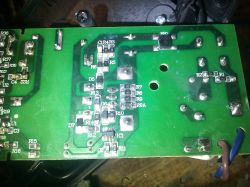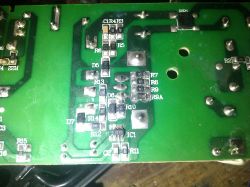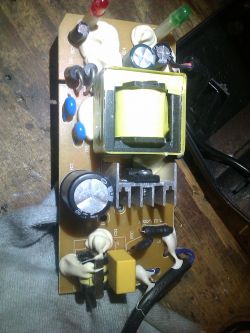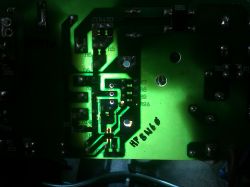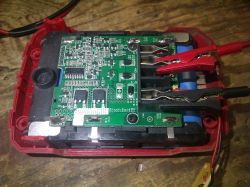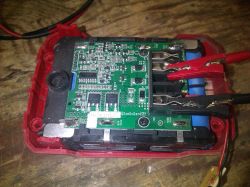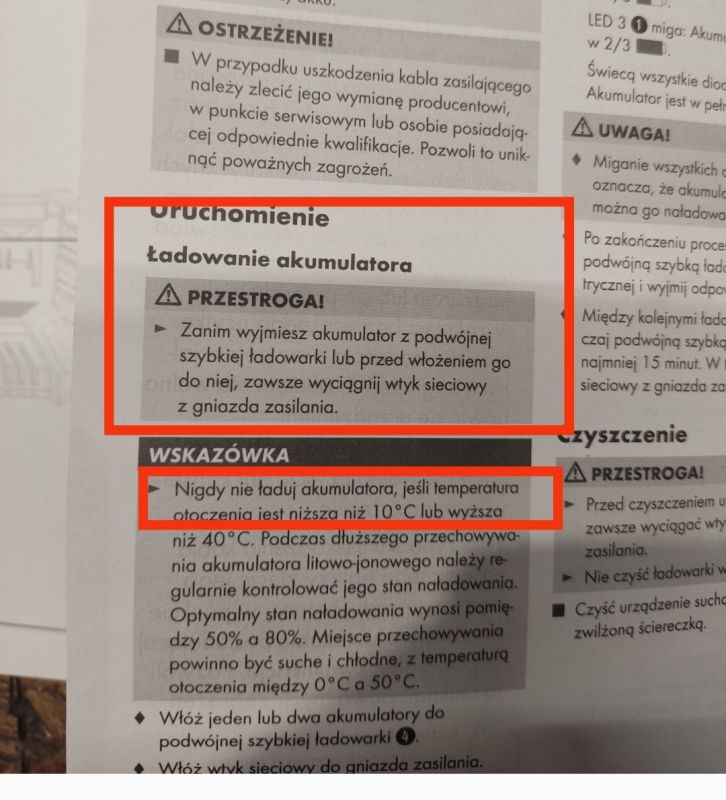FAQ
TL;DR: In this PABS 20‑Li B2 charger, “diode peak current is about 10A,” so slow 1A rectifiers fail; fast ≥10A‑peak parts and heatsinks last longer. [Elektroda, jaeger, post #19579700]
Why it matters: This FAQ helps Parkside PABS 20‑Li B2 owners and repairers fix no‑charge, burnt‑resistor, and diode/transistor failures safely and correctly.
Quick Facts
- R7, R8, R9 are 1.5Ω each; R9A is 1.0Ω. [Elektroda, krzymowski.tomek, post #19472456]
- IC1 is OB2263MP; one repair attempt used SG6859ATZ as a substitute. [Elektroda, Witek76, post #18202983]
- Typical behavior reported: ~21 V no‑load, LEDs toggling red/green, and cyclic dips to ~13 V when faulted. [Elektroda, Przemek22tex, post #18083019]
- Secondary rectifier: SR5200 (5 A) observed; use fast diodes (e.g., BYW29/MUR820). Peak diode current ≈10 A; add a heatsink. [Elektroda, jaeger, post #19579700]
- Packs include a BMS; users charged successfully from a 21 V lab supply or other 21 V sources. [Elektroda, BANANvanDYK, post #19580474]
What are the exact values of R7, R8, R9, and R9A?
R7, R8, and R9 are marked 1R5, which is 1.5 Ω each. R9A is marked 1R0, which is 1.0 Ω. [Elektroda, krzymowski.tomek, post #19472456]
Why did those low‑ohm resistors burn, and what should I test first?
They burned because the switching transistor shorted, shunting full current through them. They acted like fuses. “The transistor will probably be punctured.” Test and replace the transistor before fitting new shunts. [Elektroda, wiertacz, post #17872590]
Which controller IC is IC1, and is there a known replacement?
IC1 is OB2263MP, a flyback PWM controller. One repair used SG6859ATZ as a locally available substitute. Fix the primary side first, then check the rest. In that unit, R7–R9 measured 1.5 Ω each. [Elektroda, Witek76, post #18202983]
Which diodes should I use on the secondary, and why did my 1 A diodes overheat?
Use fast recovery diodes such as BYW29 or MUR820. The original SR5200 is 5 A, and peak current is about 10 A. Single diodes need a small heatsink. If you parallel diodes, use two from the same production series. “Use fast rectifying diodes.” [Elektroda, jaeger, post #19579700]
The charger shows red with no battery and swings 21 V→13 V. What should I check?
Check the charge‑control section. Inspect R20A and R20B (parallel resistors). Then measure LM358G pins 2, 3, 5, and 6 for sane voltages. Faults here can cause false charge indication and output oscillation. [Elektroda, Witek76, post #18202983]
Is ~21 V at the output without a battery normal on this charger?
Yes, users reported about 21 V no‑load. The LEDs can toggle from red to green and back. The output sometimes dips to ~13 V cyclically. With a battery inserted, output follows the pack voltage closely. [Elektroda, Przemek22tex, post #18083019]
How do I diagnose a charger that stopped working after a drop?
Treat it as a mechanical fault.
- Inspect both PCBs under magnification for cracked joints or broken traces.
- Gently wiggle big parts; check the input filter and transformer terminations for broken winding‑to‑pin joints.
- Reflow cracks or bridge breaks, then continuity‑check the affected nets. [Elektroda, jaeger, post #20095125]
Can I charge the Parkside 20 V pack with a 21 V bench supply or third‑party adapter?
Yes. The battery pack includes a BMS. A member charged successfully using a 21 V laboratory supply. “You can use any power supply with an output voltage of 21 V.” Observe polarity and supervise charging. [Elektroda, BANANvanDYK, post #19580474]
Will this external‑supply method damage the battery, and how long to full?
With a BMS onboard and 21 V applied, risk is reduced. The thread documents lab‑supply charging at 21 V without damage notes. Charge duration depends on pack capacity and your current setting; no timing figure is provided there. [Elektroda, BANANvanDYK, post #19580474]
Can I parallel two diodes on the secondary to share current?
Yes. If you parallel, pick two fast diodes from the same production series to improve current sharing. Add a small heatsink for a single diode. Peak currents near 10 A justify thermal margin. [Elektroda, jaeger, post #19579700]
Are these chargers failure‑prone? What issues are reported?
One user reported four failed units in 1.5 years at work. He also heard of “some triac” disintegrating. He suspects misuse per the manual warnings. Users also question battery‑to‑charger current mismatches. [Elektroda, zaradny2, post #21009486]
Can I put a 4 Ah battery on a 2.4 A Parkside charger safely?
Yes. Li‑ion charging uses CC/CV with charger current limiting. A higher‑capacity pack accepts lower current safely; charging only takes longer. Ensure voltage compatibility and let the charger control current. [“BU-409: Charging Lithium-ion”]
 but it`s worth a try. Thank you very much in advance for your help and best regards!
but it`s worth a try. Thank you very much in advance for your help and best regards!



